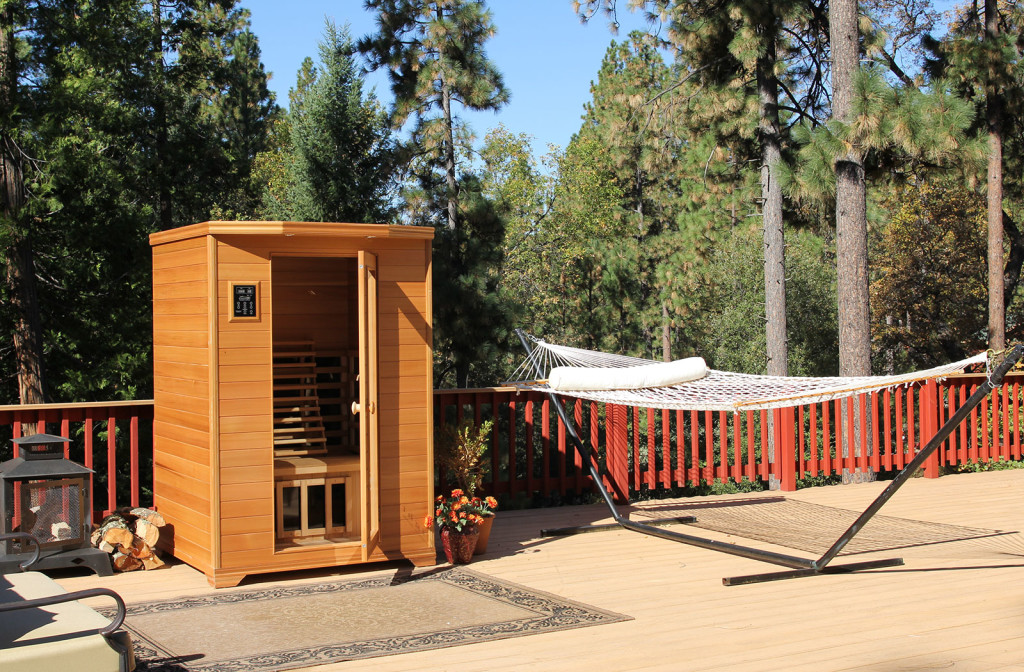Cold Shock Proteins and Cryotherapy: The Science Behind the Chill

Have you ever seen someone leap into a frozen lake in the middle of winter — no wetsuit, no dryrobe, just a deep breath and total commitment?
In countries like Russia, Finland, and Poland, this isn’t just a dare or a stunt — it’s tradition. Winter swimming, snow plunges, and post-sauna icy dips have been cultural rituals for centuries. And while they might seem extreme, there’s fascinating science behind this cold exposure: the production of Cold Shock Proteins (CSPs) — your body’s molecular response team to extreme cold.
These proteins do more than just help you shiver less. They play a role in repairing cells, reducing inflammation, strengthening immunity, and even boosting mental health. When combined with the contrasting heat of far infrared saunas, they create a powerful one-two punch for resilience and recovery.
What Are Cold Shock Proteins (CSPs)?
Cold shock proteins are a group of protective proteins your body releases in response to rapid drops in temperature. They’re similar to heat shock proteins, which kick into gear when you’re exercising or using a sauna. But instead of reacting to heat, CSPs respond to extreme cold — like jumping into a freezing lake, taking a cold shower, or stepping into a cryotherapy chamber.
Cold shock proteins are your body’s emergency responders:
They help stabilize and refold damaged proteins, restore cellular integrity, and initiate regenerative processes throughout your body.
These proteins aren’t just for survival — they’re part of what helps people who train in the cold (like athletes and military personnel) recover faster and stay healthier.
What Happens to Your Body in the Cold?
When you’re hit with cold, your body scrambles to preserve core temperature. Blood vessels constrict, heart rate spikes, and your body prioritizes vital organs. This “shock” also ramps up your metabolism, increases brown fat activation, and sends signals to produce cold shock proteins.
CSPs support resilience at a cellular level:
By repairing damaged cells, boosting oxygen efficiency, and optimizing inflammation responses, they’re key players in long-term health.
Benefits of Cold Shock Proteins
The benefits of cold exposure are wide-ranging — but most of them are linked to the effects of CSPs and their influence on cellular and systemic processes:
Cell Regeneration & Repair
CSPs act as molecular chaperones, protecting proteins during stress, promoting tissue regeneration, and reducing oxidative damage.
Improved Cognitive Function
Cold exposure enhances neurotransmitter function and synaptic regeneration, sharpening memory, focus, and learning capacity.
Pain & Inflammation Reduction
CSPs help regulate inflammatory cytokines and histamines, offering relief for conditions like fibromyalgia, arthritis, and chronic fatigue.
Immune Support
Cold immersion triggers a surge in white blood cells and lymphatic circulation, improving your immune response to infection and disease.
Weight Loss Support
Cold exposure activates brown adipose tissue (BAT), which burns body fat to generate heat — potentially accelerating weight loss efforts.
A short cold session can burn up to 100 calories:
It’s not a substitute for diet and exercise, but it’s a powerful metabolic booster.
Cold Shock vs Heat Shock: Better Together?
It’s no accident that cultures who use cold plunges often pair them with sauna rituals. Heat and cold activate different — but complementary — stress proteins (HSPs and CSPs), and together, they work to bring your body into peak performance mode.
Contrast therapy (heat followed by cold) enhances recovery:
By triggering alternating states of vasodilation and vasoconstriction, you get faster circulation, more oxygenation, and better detoxification.
When you jump from an infrared sauna into a cold plunge — or finish a cryotherapy session after sauna — you’re amplifying both sides of the cellular healing spectrum.
What Is Cryotherapy?
Cryotherapy is the modern, science-backed version of a snow bath. You step into a chamber cooled with nitrogen vapor, bringing air temperatures down to -180°C (-292°F). A typical session lasts 2–3 minutes — just long enough to trigger CSP production without harming your skin or internal organs.
Your blood retreats to your core to protect vital organs:
This action preserves life — and triggers cold shock protein release when your body warms up again.
Cryotherapy is used by professional athletes, chronic pain sufferers, and health enthusiasts worldwide for its rapid benefits with minimal time commitment.
Cryotherapy Benefits: Backed by Science
Mood Boosting
The cold shock stimulates the release of endorphins, dopamine, and adrenaline — producing feelings of euphoria and energy.
Metabolic Enhancement
As your body warms back up, brown fat is activated to generate heat, increasing your metabolic rate.
Reduced Pain & Inflammation
CSPs decrease inflammatory markers and ease joint pain, making cryotherapy a go-to for those with arthritis or injury.
Improved Sleep & Recovery
Users often report deeper sleep and faster physical recovery post-treatment.
Who Should (and Shouldn’t) Try Cryotherapy?
While most people tolerate cryotherapy well, there are some exceptions:
Avoid if you’re pregnant
Avoid if you have uncontrolled high blood pressure or heart conditions
Always consult your doctor before starting
Cryotherapy is powerful — but not for everyone:
Make sure you’ve checked with your healthcare provider before stepping into the cold.
Cold Shock Proteins and Longevity
There’s increasing research suggesting that consistent exposure to cold may play a role in longevity. CSPs help protect DNA, regulate inflammation, and maintain metabolic flexibility — all critical components of healthy aging.
CSPs may even support healthy skin aging:
By improving collagen synthesis and circulation, they contribute to youthful appearance and elasticity.
Summary: Why Cold Shock Is Worth It
Cold shock proteins may be nature’s most overlooked healing mechanism — activated not by pills or supplements, but by embracing discomfort. With regular exposure to cold (via showers, winter swims, or cryotherapy), your body can develop:
A more resilient immune system
Stronger mental clarity
Lower inflammation
Faster recovery
Better mood and energy
Slower aging
And when combined with far infrared sauna use, the contrast between hot and cold supercharges your body’s stress adaptation — something few other therapies can match.
Cold shock proteins aren’t just for survival:
They’re your body’s blueprint for healing, repair, and resilience.



